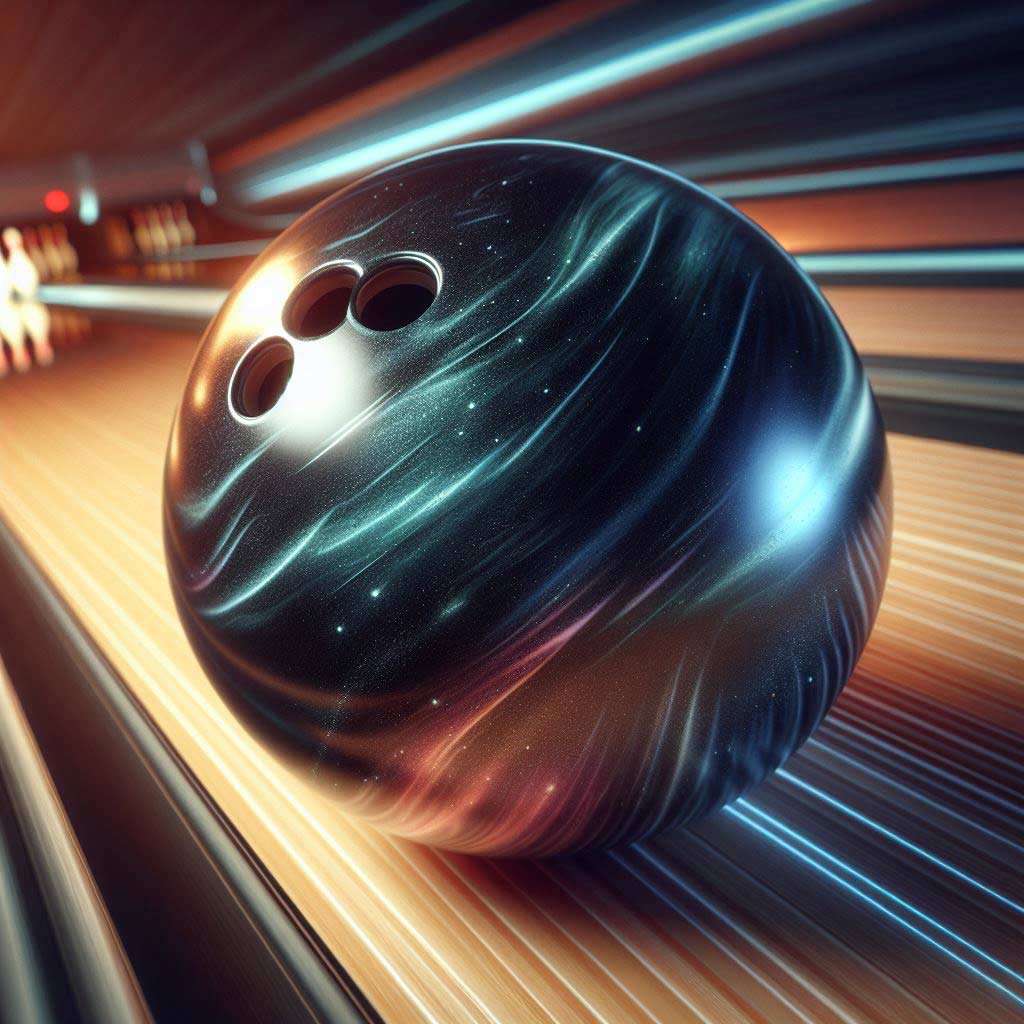In the ever-evolving world of bowling equipment, one ball material stands out for its unique advantages – urethane. Urethane bowling balls have been around for decades, but their role and benefits are often misunderstood by casual and even experienced bowlers.
So what exactly are urethane bowling balls good for? As it turns out, these specialty balls offer a range of performance advantages in certain lane conditions and scenarios. In this comprehensive guide, we’ll explore the key advantages of using a urethane ball and the specific situations where they can help you bowl your best.
But first, let’s quickly define what a urethane bowling ball is and how it differs from other ball types.
Urethane vs. Other Ball Materials
Urethane is a synthetic polymer material that was first introduced for bowling balls in the 1960s. Compared to the traditional plastic or “house” balls, urethane balls offer a number of distinct properties:
- Lower hook potential: Urethane balls have a less aggressive, more predictable hook shape compared to reactive resin balls. This lower overall hook allows for better ball control.
- Reduced backend motion: The lower hook of urethane causes the ball to lose energy more gradually, resulting in a more controlled backend motion and less sudden “hook” at the end of the lane.
- Longer lasting cover: Urethane bowling ball covers tend to be more durable and resistant to wear and tear compared to reactive resin covers. This can extend the usable life of the ball.
- Consistent performance: Urethane balls maintain a very consistent motion and reaction, even as the cover breaks in over time. This lends itself well to developing skill and consistency.
In contrast, reactive resin balls are designed to hook more aggressively, generating greater backend motion and overall power. Plastic/polyester balls have the least amount of hook, making them best suited for beginners or very dry lane conditions.
So when do the unique properties of urethane bowling balls provide an advantage? Let’s dive in.
-
Dry/Difficult Lane Conditions
One of the primary advantages of using a urethane bowling ball is on dry, difficult lane conditions. These types of lane patterns are increasingly common, especially at higher levels of competition.
When the lanes are dry, with minimal oil throughout, balls with aggressive reactive coverings will often “over-hook” – that is, they’ll generate too much hook and backend motion, causing the ball to lose control and hit the pins at an ineffective angle. This can result in inconsistent and unpredictable results.
In these dry, challenging conditions, a urethane ball’s reduced hook potential becomes a major advantage. The lower, more controlled hook allows the ball to maintain a steady, predictable trajectory down the lane. This helps you keep the ball in the optimum hitting zone, maximizing your chances of a strike or high-scoring shot.
Additionally, urethane balls tend to generate less overall hook than their reactive resin counterparts. This means they’ll be less affected by changes in lane conditions throughout a game or series. The ball will continue rolling smoothly and hitting the pocket consistently, even as the oil pattern breaks down.
Experienced bowlers often keep a benchmark urethane ball in their arsenal specifically for dry, difficult lane conditions. It allows them to stay in control and avoid the wild, uncontrolled hook that can plague reactive resin balls on drier lanes.
For example, let’s say you’re bowling in a tournament on a challenging, heavily stripped lane pattern. The dry, friction-heavy conditions would likely cause your high-performance reactive ball to “over-hook” dramatically, making it difficult to strike consistently. In this scenario, pulling out a trusted urethane ball could be the key to maintaining control and racking up the pins.
-
Conserving Energy
Another important advantage of using a urethane bowling ball relates to conserving your ball’s energy and overall power through the pins.
Reactive resin balls are designed to generate a lot of hook and backend motion. While this can be advantageous on fresh, oily lane conditions, it also means the ball uses up more of its energy getting to the pins. This can be an issue on longer or drier lane patterns, where you need to preserve energy for the backend.
Urethane balls, with their lower overall hook potential, tend to conserve energy more effectively. The ball rolls smoothly down the lane, holding its energy in reserve until the final moments before impact. This allows it to hit the pins with a cleaner, more powerful impact, maximizing pin carry.
Conserving energy is particularly important on longer, drier lane patterns common in tournament play. If your reactive ball is burning up all its energy just getting to the pocket, you may find yourself struggling to carry strikes, especially later in a game or series. Using a urethane ball can help you maintain that vital energy reserve for maximum pin carry.
For example, let’s say you’re bowling on a 45-foot tournament pattern that’s starting to dry out as the day goes on. Your go-to reactive ball was working great earlier, but now it’s hooking too much and struggling to carry strikes.
Switching to a urethane ball in this scenario could allow you to preserve more energy and keep hitting the pocket solidly, even as the lane conditions change.
-
Developing Bowling Skills
Urethane bowling balls can also be incredibly valuable tools for beginner to intermediate bowlers looking to develop their fundamental skills and consistency.
The lower, more predictable hook of a urethane ball makes it easier for new bowlers to focus on the basics – their swing, release, and target accuracy.
With a reactive resin ball, even a small error in your mechanics can result in a dramatic, uncontrolled hook that misses the pocket. This can be very discouraging for developing bowlers.
In contrast, the smoother, more forgiving motion of a urethane ball allows new players to work on their fundamentals without being penalized as harshly for minor technique flaws.
The ball will still hook, but in a much more gradual, controlled manner. This helps bowlers build confidence and consistency before moving up to more aggressive equipment.
Additionally, the consistent, reliable performance of urethane balls is ideal for honing your game. Since the ball reaction remains stable over time, you can more easily groove your swing and release, and track your improvement. There’s no need to constantly re-adjust to unpredictable ball motion.
Many bowling coaches recommend that beginners start with a quality urethane ball before gradually transitioning to reactive equipment as their skills progress.
This methodical approach allows them to develop a solid foundation and feel for the game. Once their consistency and ball control improve, they can then leverage the increased power and backend motion of reactive resin balls.
For instance, let’s say you’re a newer bowler struggling to find consistency. Your reactive ball is hooking unpredictably, causing you to repeatedly miss the pocket.
Switching to a urethane ball could let you focus on your swing mechanics, target accuracy, and other fundamentals without being punished by uncontrolled hook. This can be a game-changer in building your skills and confidence as a bowler.
-
Tournament Conditions
Finally, urethane bowling balls can provide a distinct advantage in tournament play, where organizers often implement specific equipment restrictions.
Many tournament organizers, especially at the highest levels of competition, will mandate the use of urethane or plastic balls. The goal is to level the playing field and minimize the impact of equipment advantages. This creates a scenario where the consistent, predictable performance of a urethane ball becomes a key asset.
On a level playing field, a bowler’s skill, strategy, and execution become the primary factors determining success. The reduced variability of urethane balls means the best technical bowlers are more likely to rise to the top. Reactive resin “equipment advantages” are neutralized.
Additionally, the stability and consistency of urethane can be hugely beneficial in multi-game tournament formats. As lane conditions change over the course of a long event, your urethane ball will maintain a reliable, controlled motion – allowing you to adapt your strategy rather than constantly chasing an unpredictable ball reaction.
Many of the sport’s greatest champions, from Pete Weber to Norm Duke, have found great success utilizing urethane balls in major tournament conditions. Their ability to leverage the consistency and control of these specialty balls, combined with elite technical skills, has proved a winning formula time and time again.
For example, let’s say you’re competing in a prestigious tournament with a urethane ball requirement. Your ability to consistently hit your target and control the pocket, without being at the mercy of an aggressive reactive ball, could give you a significant strategic advantage over players struggling to adapt. This could be the key to you making a deep run and taking home the top prize.
Conclusion
In the ever-evolving world of bowling equipment, urethane bowling balls play a unique and valuable role. While they may not generate the same jaw-dropping hook as high-performance reactive resin balls, urethane’s lower, more predictable motion provides distinct advantages in certain situations.
Whether you’re facing challenging dry lane conditions, looking to conserve energy on longer patterns, developing your fundamental skills, or competing in a tournament setting – a quality urethane ball can be a game-changing piece of equipment in your arsenal.
By understanding the specific benefits of urethane and knowing when to leverage this specialty ball type, you can take your game to new heights and bowl at your absolute best, no matter the conditions you face. So don’t overlook the power of urethane – it just might be the key to unlocking your full potential on the lanes.





